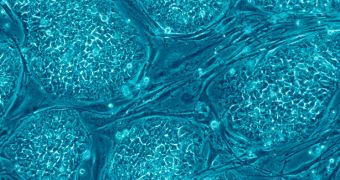A group of scientists from the University of Michigan announces the development of a new type of coating for the famous Petri dish. This is the lab instrument which provides shelter for cultures of various microorganisms, as well as for stem cells and other types of cells, which need to be grown artificially. With the new improvements, the dishes will become a lot more suitable for hosting embryonic stem cells, the research team says, which means that therapies and treatments based on ESC could soon become a reality.
One of the primary obstacles of ESC research today is the fact that these human cells need to be grown in substrates that feature substances derived from animals. This means that the layer on which the cells grow do not behave in a very predictable way, and this puts a major dent in most researches revolving around embryonic stem cells. “These non-defined, animal-based components create issues with the FDA [US Food and Drug Administration] and hinder clinical applications,” explains UM associate professor of chemical engineering, Joerg Lahann.
The expert conducted the study alongside colleague and UM Health System associate professor in obstetrics and gynecology Gary Smith. They collaborated with other scientists in constructing a new type of growth matrix that could fulfill the needs of the ESC and still behave in a controllable, predictable manner. They came up with an entirely synthetic compound that does not eliminate foreign substances into the stem cells. This ability avoids contamination, and allows the stem cells to carry out their operations in a manner similar as when they are inside an actual human body. Details of how the substance works appear in this week's online issue of the top scientific journal Nature Biotechnology.
“We have designed a fully synthetic, fully chemically defined hydrogel that has long-term stability and no batch-to-batch variability. Moreover, we have established that it can be used for long-term growth of human embryonic stem cells while maintaining all of their known normal functions. These include normal genetic makeup, lack of spontaneous differentiation and maintenance of pluripotency, which means they can still become any cell type of the human body. This is a perfect example of an interdisciplinary collaboration leading to information gained and future discovery of cures and improvements of human health,” Smith says. The matrix is a combination of six individual polymer coatings, and the research team named it PMEDSAH.

 14 DAY TRIAL //
14 DAY TRIAL //